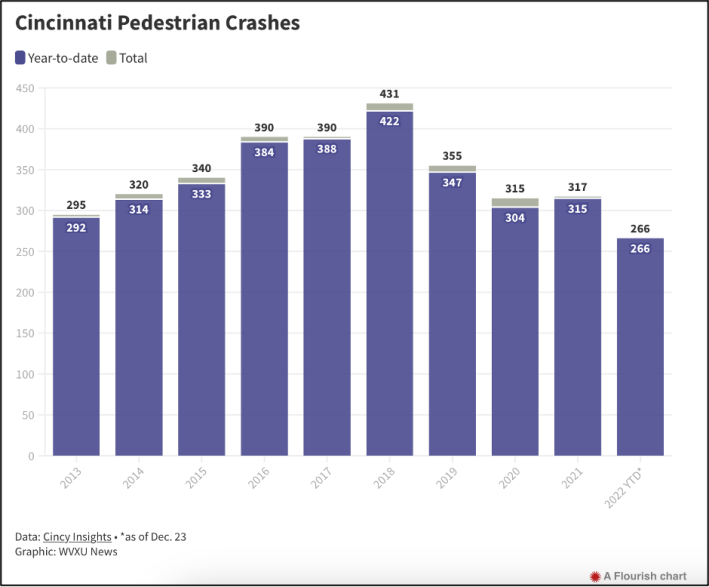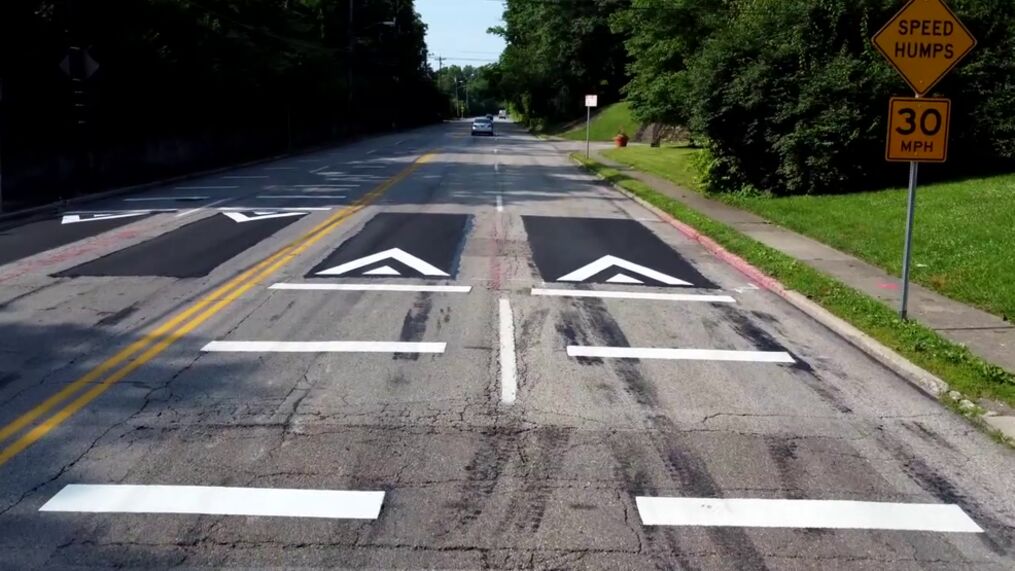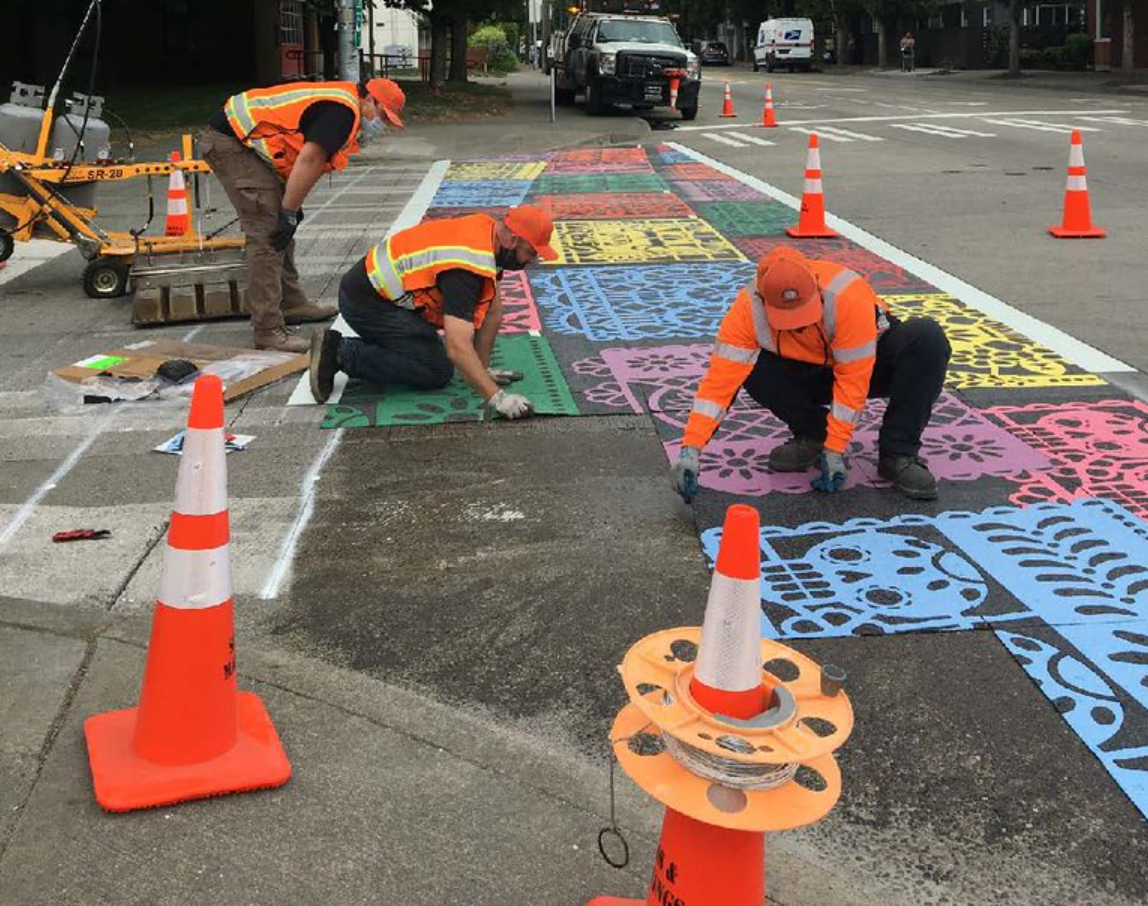Cincinnati is creating an in-house team to build safer streets for people who walk and roll, and vaulting over one of the most common roadblocks to saving vulnerable road users lives.
In what could be a model for cities across America, the City of Seven Hills is in the process of hiring a five-member crew dedicated exclusively to installing and upgrading pedestrian infrastructure, allowing the Ohio community to bypass the often-expensive and time-consuming process of soliciting outside contractors or waiting for overburdened city staff to do that critical work.
The move follows a broader groundswell of advocacy to end traffic violence on Cincy streets. The city recently more than doubled its funding for pedestrian safety initiatives as part of its 2023 budget, and adopted a Complete Streets ordinance in December that will require DOT leaders to explain themselves when they choose not to include vulnerable road user facilities in road projects; citizen-led advocacy groups have also successfully fought for significant infrastructure improvements in their neighborhoods.
“We have a great department of public services that we work with very well, but they just do so much city-wide, for so many departments," said Mel McVay, who manages the city's Vision Zero program. "As pedestrian safety has become more and more of a priority for our city council, they have designated exponentially more and more money to building infrastructure. It’s fantastic — and eventually, we decided it made sense to just hire our own crew."

Cincinnati's investment into its walkers doesn't just make safety sense; it also make fiscal and logistical sense, too.
Many of the most-effective pedestrian-focused projects, McVay explains, don't actually require specialized knowledge to install, because they rely on simple, easy-to-work-with materials like bolted-down plastic dividers to prevent drivers form drifting over center-lines, or high-visibility paint to make crosswalks easier for motorists to see at night. Those simple changes can take months if not years to complete, though, when they're forced to compete with a long list of other municipal priorities, or when the city has to go through an onerous bid process with outside contractors, many of whom are still grappling with pandemic-prompted workforce shortages and rising materials costs.
McVay is careful to note that Cincinnati will still rely on contractors for some projects that require expertise with certain materials — concrete work, in particular, will probably need to be outsourced — but the new crew will still be able to deploy many life-saving solutions quickly and cheaply. The city has estimated that after initial start-up costs, the initiative will save taxpayers between $250,000 and $300,0000 a year, but that number may shift, particularly as the DOT continues to explore safety solutions that are new to the region.
A recent speed cushion pilot, for instance, slashed the percentage of drivers who sped on the study corridors from 95 percent to just 11 percent, without compromising access for emergency service vehicles, whose wheelbases are usually wide enough to drive around them. Now, the city is experimenting with more permanent cushions made of asphalt throughout the region, and McVay is hopeful the new crew will be empowered to suggest similar ideas, especially as they gain expertise in building people-centered infrastructure.
"How much, exactly, the savings will end up being is hard to say, just because we’re pivoting and trying new things all the time," McVay adds. "That makes my job really exciting, because it’s different every day.”

Even when it comes to less cutting-edge interventions, though, McVay is hopeful that the pedestrian safety crew will make a big difference — if only because residents won't have to wait as long for the infrastructure changes they've been demanding for years.
“I speak to people in our neighborhoods every day, and one of the toughest parts of my job is having to constantly tell people that it’s going to be 15 months before we can install your raised crosswalk — just because that’s how long it takes to get through purchasing and things like that," she adds. "It’s heartbreaking for folks who are living with crashes on a daily basis to be told they have to wait, because so many people know people who have been hit. ... Hopefully, this will help us make our streets safer sooner.”






